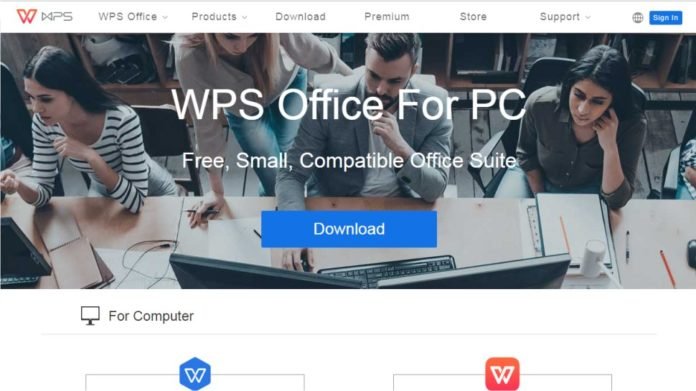Best Microsoft Office alternatives in 2019
Microsoft Office remains the most popular productivity suite for documents, spreadsheets, presentations, and more – but with IT departments needing to balance budgets, a range of alternatives have become increasingly attractive.
This is not least because software licensing fees for alternative office suites can be competitive, and some are even free to use. However, paying less, or nothing, doesn’t necessarily mean that the software is of lower quality, as the open-source community can testify.
However, there can be issues with sharing documents between different office suite platforms, which can be a real concern. One specific example is that a document saved to .doc or .docx format in a free software platform such as Open Office might not retain its formatting when loaded into Microsoft Word itself, even though the file type shouldn’t be a problem.
This is why when choosing an alternative to Microsoft Office, you need to be certain of any shortfalls that might limit your use of the software, especially if you need to share or collaborate on documents with other users who have one or more different office suites.
If you’re using the office alternative as a standalone piece of software there shouldn’t be any such issues, but it is something to be mindful about if you end up changing to a different software suite.
That said, the best in the Microsoft Office alternatives are generally strong programs with full functionality, and little problem sharing files with other platforms. Here we’ll show the best of them, along with their strengths and weaknesses.
Best Microsoft Office alternatives at a glance
- FreeOffice
- LibreOffice
- WPS Office
- iWork
- Calira
- OfficeSuite
- Polaris Office
- OnlyOffice
- Word Perfect
- Apache OpenOffice
- Want your company or services to be added to this buyer’s guide? Please contact us
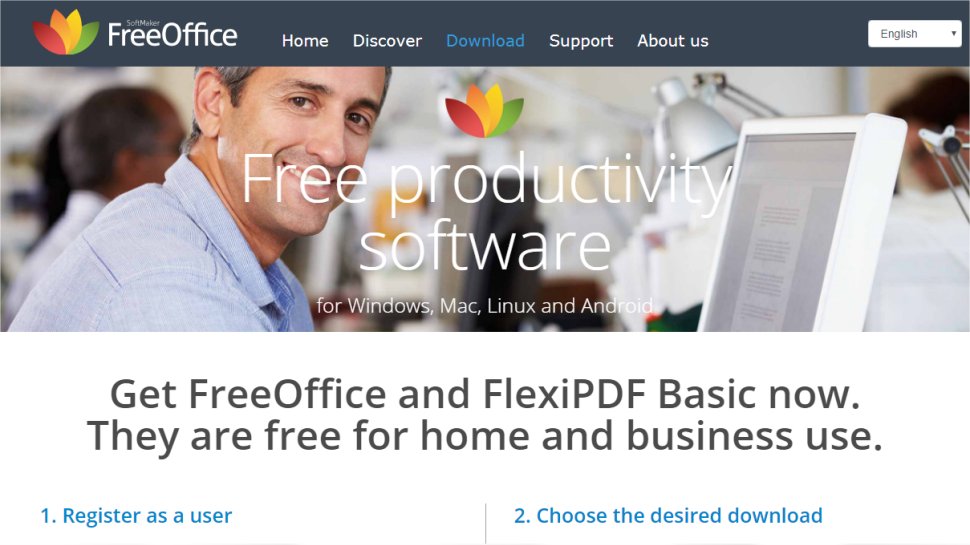
If you are looking for a free and easy alternative to Microsoft Office, then FreeOffice is the suite for you. The company, SoftMaker, has been developing office software since 1987 and its office suite is their flagship product.
FreeOffice is a complete office suite that is free to use for both home and in the workplace. It is developed for both Windows and Linux, and offers a basic version for Android users.
The suite itself is fully compatible with all Microsoft Word, Excel and PowerPoint formats. This means that you can not only view but save files in formats such as DOCX, XLSX and PPTX. It also supports older file types such as PPT and XLS.
The new interface that was launched this year gives you the option of either working with modern or classic menus and toolbars. This makes switching from Microsoft Office easy to do as the interface is eerily similar.
For those users who have the luxury of a touchscreen PC you can use touch mode with larger icons. This mode is available for both the newer version look and the classic menu-based interface.
In order to download FreeOffice you must register an account via the website first. The download link will then become available.
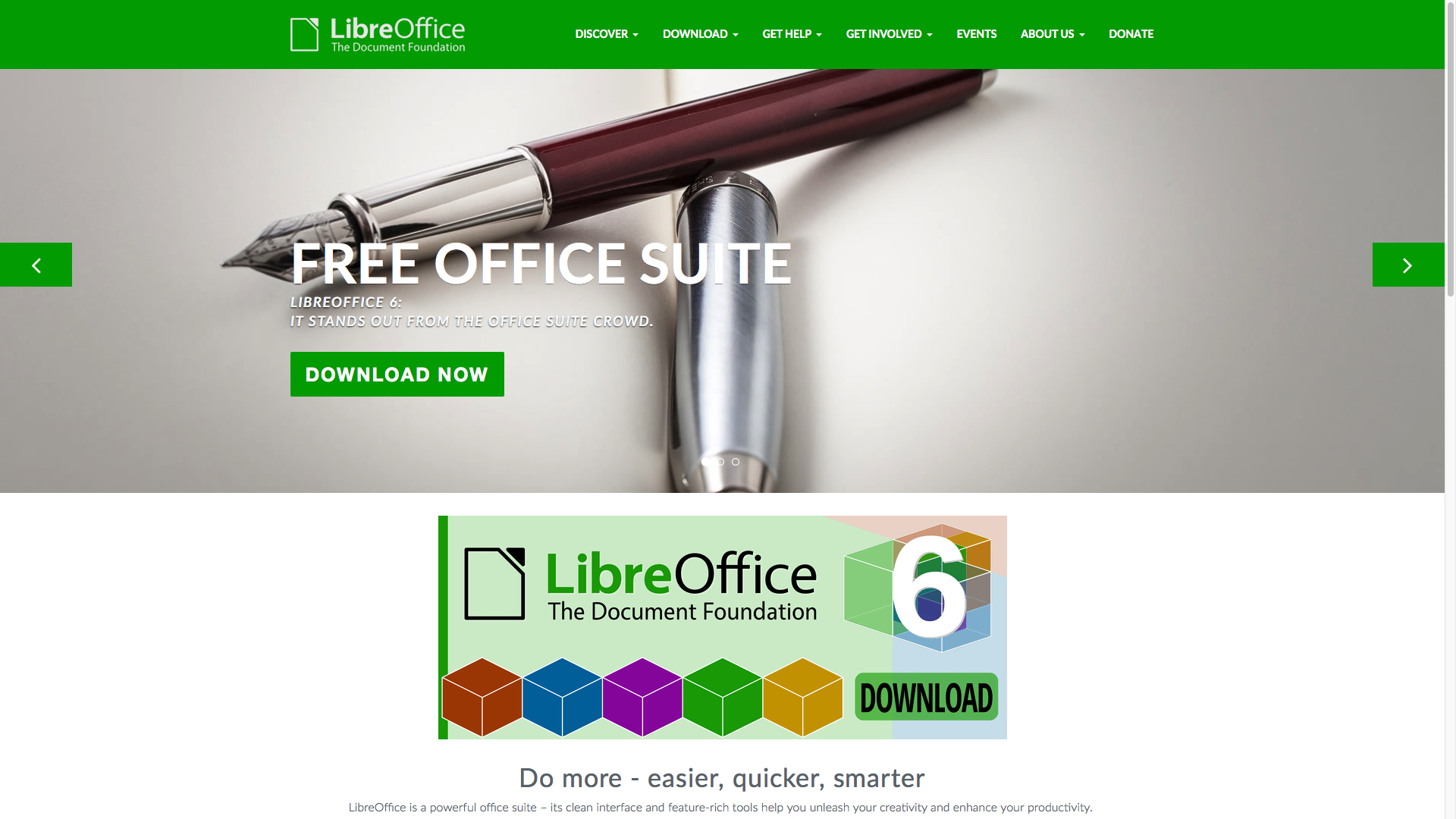
LibreOffice is the offspring of The Document Foundation and split from OpenOffice in 2010. The suite itself is free and open source, and is made up of a word processor, spreadsheet and presentation software, and is available in 110 languages.
While LibreOffice uses the ODF (OpenDocument) format it still supports a range of other format types such as those used in Microsoft Office. LibreOffice is the default suite for most Linux distros and it is also available for use on Windows and macOS. There’s also a LibreOffice viewer for Android.
As with most open source software all your technical support comes from online, but seeing how easy this is to use, support will be rarely needed. The platform also offers the option to export your files into PDF format amongst others.
You can add extra features to LibreOffice via extensions from its website. These include extra templates for documents.
While still a smaller download size than Microsoft Office, LibreOffice weighs in at 228MB so is still a fairly large suite to install.
One of the criticisms that has been noted in relation to LibreOffice is that if you create a document within its word processor and then open it within a Word document, it may interfere with fonts and formatting.

WPS Office was released in 2016 by Chinese software developer Kingsoft. It is an office suite that is available for Windows, Linux, Android and iOS. The suite is available in English, French, German, Spanish, Portuguese, Polish and Russian.
It offers a free and a premium tier. The free tier allows you to use Writer, Presentation and Spreadsheets, which are alternatives to the Microsoft Office suite which it also resembles closely. WPS offers a PDF to Word converter which is fast and easy to use. It supports bulk exportation and can also split-merge PDF files if needed.
The suite offers 1GB of free cloud storage for iOS and PC users, but this service is not yet available for Android.
The ‘Premium’ tier is $29.99 per year and allows the user to connect up 9 devices at once. It also gets rids of all those annoying adverts that are commonplace on the free tier.
WPS has been criticised for not allowing collaboration beyond those that track changes and allow users to insert comments. Users have also said that the interface can be quite slow at times when it comes to loading documents. Linux users have mentioned that not all fonts are automatically included and that they have to be installed separately.
For Android users installation is quite large and criticism has been levelled imploring the developer to make it more lightweight.
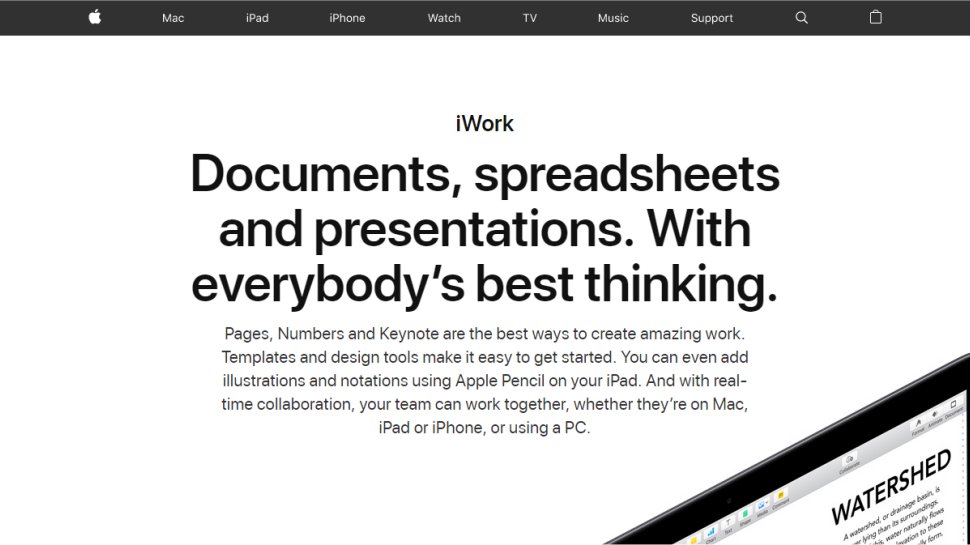
iWork is Apple’s alternative to Microsoft Office. It consists of Pages, Keynote and Numbers. These are broadly equivalent to Word, PowerPoint and Excel. It is exclusive to macOS for a local install, but there are versions on the cloud that can be enjoyed by users of other platforms.
iWork is much more lightweight than MS Office and this would suit most users. There are a lot of features in MS Office that the majority of users do not even know exist nevermind actually use. That might be a pro for power users but many users may just want a straightforward interface with only a few tabs to choose features from. This is where iWork comes in.
iWork is free and can be downloaded from the App Store on your Mac. There are three separate apps, each for word processing, preparing presentations and for creating spreadsheets. Numbers, Apple’s spreadsheet alternative, offers a blank canvas for you to begin on rather than showing a daunting grid view on your spreadsheet. It takes away that feeling of it being a ledger and it is very easy to use and add images, tables and charts as you go.
The word processor, Pages, is very simple and is perfect for straightforward documents, and it is not inundated with the layers of options that exist within MS Word. Pages also allows users to collaborate on their work and has now added a feature that supports EPUB, which can be created and shared to iBooks if you see fit to do so.
The presentation app, Keynote, has been referred to as the better alternative to PowerPoint by online users as it is easy to use. It creates beautiful presentations without the hassle that can be associated with PowerPoint.
MS Office may not be able to open documents created in iWork, but all iWork applications can export to other formats that are compatible with other suites.
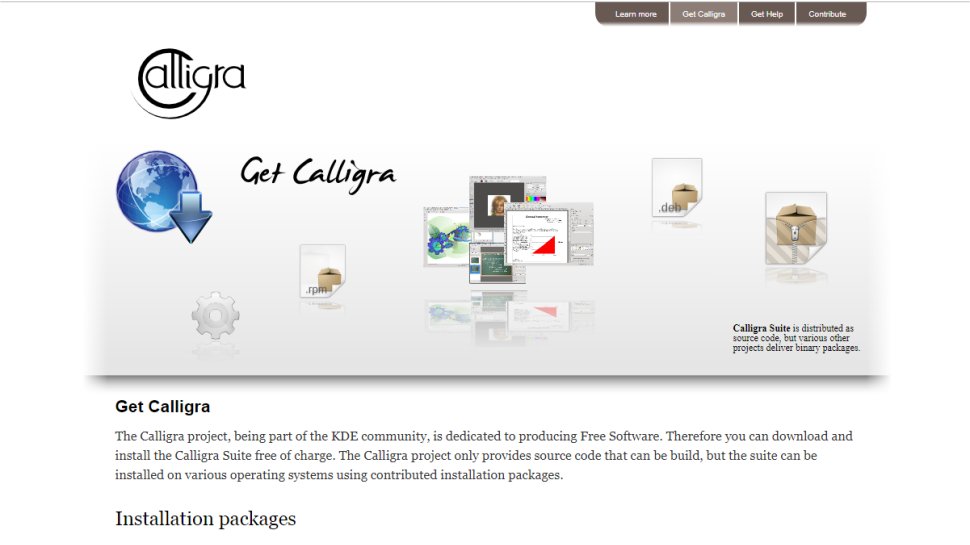
Calligra Office suite was initially released in October 2000 as part of KOffice. It is an office suite developed by KDE as well as being suitable to use for graphic art design. It is available on Linux, macOS, Windows and Android.
Calligra is a free and open source software suite and can be downloaded directly from its own website or from KDE’s downloads page. It is completely distinct from LibreOffice.
While LibreOffice has the familiar look and feel of MS Office, Calligra does not. A lot of the useable features tabs are set on the right-hand side of the screen and not on the top like MS Office and other office suites. This means that the page you are currently editing does not take up the full screen.
One of the extra features that makes Calligra stand out is that it offers a mind-mapping and project managing tool. Usually these cost extra.
Calligra allows you to read DOCX and DOX formats but you cannot edit them. This can cause difficulties if your contacts send you Microsoft Office documents, so ask them to use a different format such as ODT (Open Document Text) instead.

OfficeSuite is an application that was developed by MobiSystems and is available for Android, iOS and Windows. Devices that are made by Amazon, Toshiba, Sony and Alcatel come with OfficeSuite pre-installed. The Android app has been named amongst the top applications for business.
You can synchronize between devices using your OfficeSuite account and only one license is needed for all your devices.
It has several tiers to choose from. The ‘Basic’ tier is free and allows users to view and edit Word, Excel and PowerPoint documents. The suite has full compatibility with most formats such as ODT, RTF, CSV, DOC, and ZIP. The free tier also enables users to view PDF documents and offers cloud support via services like Dropbox, OneDrive and Google Drive.
The ‘Personal’ tier enables the suite on one desktop, one tablet and one phone. This tier costs $29.99. It has all the free tier has to offer along with the ability to track changes, export PDF’s to other editable formats and advanced PDF features such as digital signatures and passwords. The ‘Group’ tier is $49.99 per year and allows you to use across five desktops, five tablets and 5 phones. The ‘Business’ tier offers up to 100 licenses for $3.99 per user per month.
OfficeSuite has received much praise online but it has also been criticised for pushing users to purchase premium subscriptions.
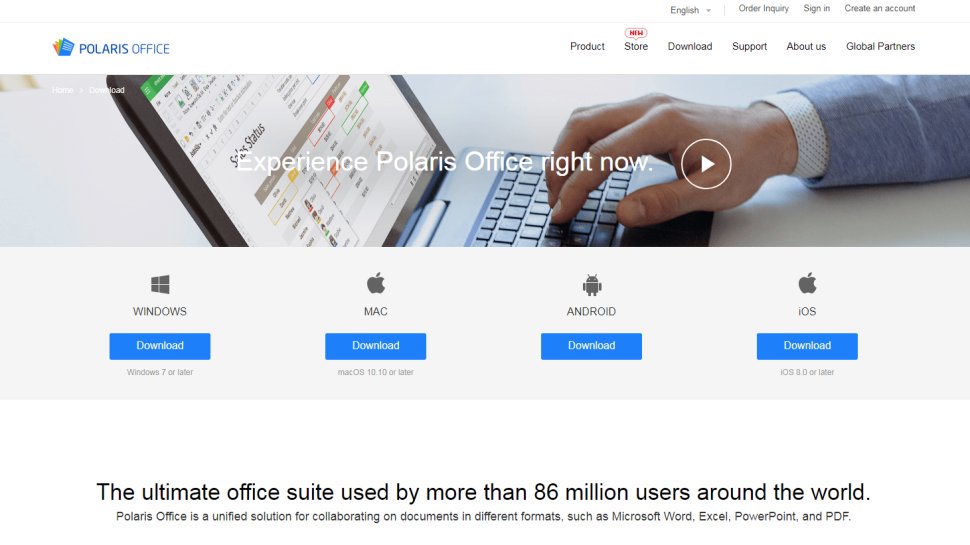
Polaris Office is developed by Intraware and was initially released in March 2014. It is a free office suite that is available for Android, iOS, Windows and macOS. It appears to be a popular suite amongst businesses and is used by the likes of Amazon and Samsung.
While the free version is very generous there is a business version to which you can upgrade. To enquire about the cost, you will need to send Polaris a ‘Purchase Query form’ which can be found on their website.
With this powerful suite you can edit many different file formats including PPT, XLS, DOCX and HWP. As your account synchronizes amongst your devices you will be able to edit and create from wherever you are. All your data is secured by AWS (Amazon Web Services).
With the latest edition of Polaris you can now convert and edit PDF documents. Users can also convert voice and image files to documents if the need arises.
The suite supports several different languages such as French, German, Korean, English and Russian.
The only real criticism there is of Polaris is that while the free edition offers a huge range of features the ads can be a little distracting at times.
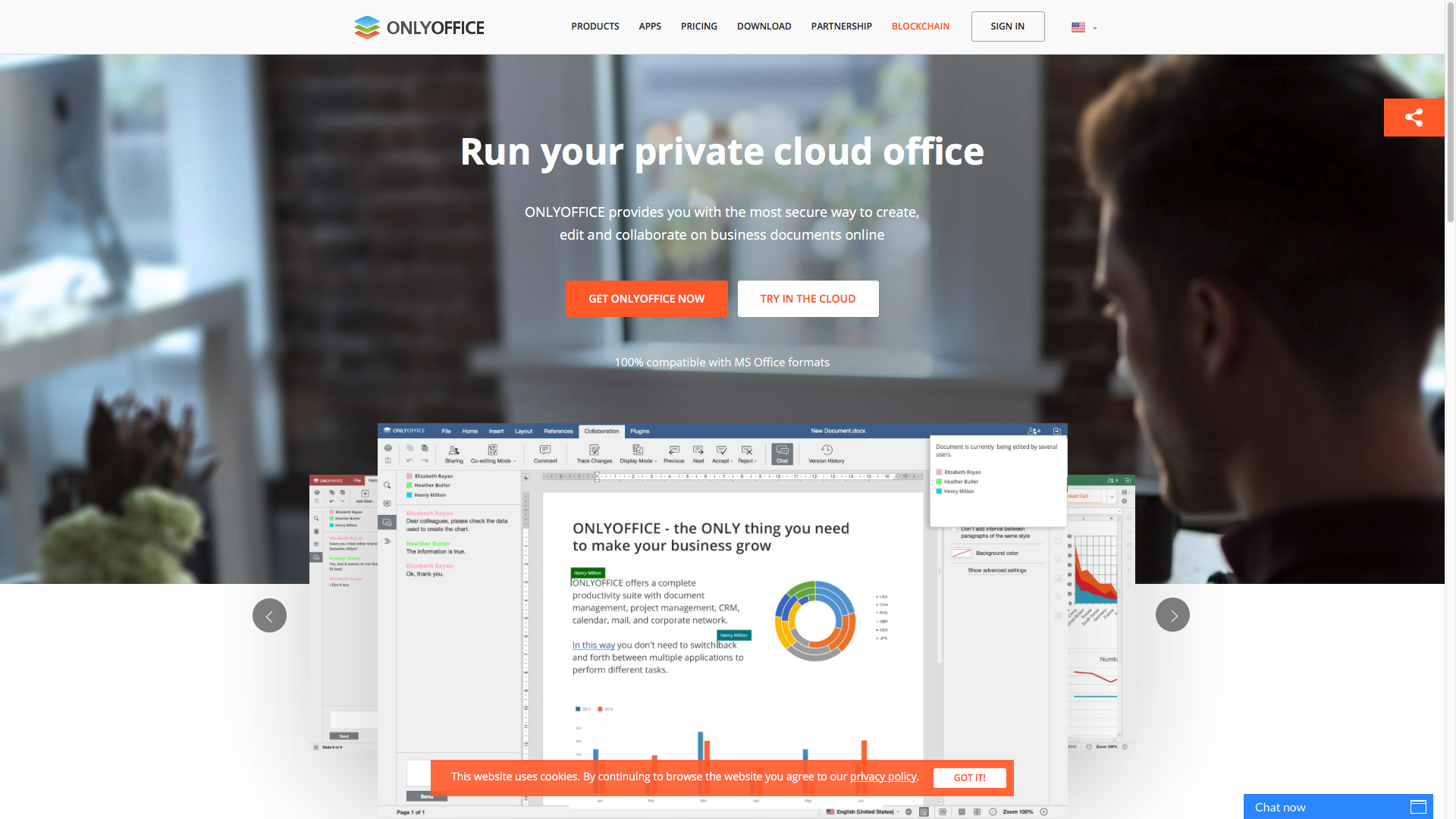
OnlyOffice is an open source office suite developed by Ascensio Systems SIA. It is available in over 22 languages and boasts of Oracle being one of their leading clients.
The completely free version, known as the ‘Community Edition’ is most suited for small business and allows up to 20 connections at once. This suite does not just offer the usual features such as word processing or spreadsheets but is very useful in relation to order fulfilment and for documenting sales.
The handy calendar feature allows user to keep up to date with personal and work-related tasks as well as keeping an eye on deadlines. Third party integration is also supported. You can create your own Mailboxes with the ‘Mail’ tool.
As with other office suites there is the ability to create and edit documents, spreadsheets and presentations. Users can collaborate on projects and make comments in files where necessary.
Users have reported that support can be hard to find and that the online chat forum community that is used to provide help can be a bit tricky to navigate.

WordPerfect was developed by Corel nearly 40 years ago and is available on Windows only. It was most popular in the 80’s where it was known for its DOS and Microsoft Windows versions. It was soon eclipsed by Microsoft Office upon its release.
It is an all-in-one office suite. The standard edition costs $432 for the full version. It offers its own word processor, spreadsheet program and a slideshow creator. The latest version now includes improved photo-editing and management. WordPerfect offer a free trial version which you can download from the main site.
Like other suites it can save to many different formats such as DOCX, PDF and HTML. The common file extensions for WordPerfect files is WPD. It also offers ebooks publishing and macro management.
The PDF feature gives users the ability to edit and fill in forms via PDF, as well as change the form’s appearance e.g. font/color. WordPerfect supports opening multiple documents at one time.
Online reviews have critiqued the UI saying that it is not user-friendly and it can cause problem with fonts. You also sometimes have to delve into the manual to fix problems which would not be an issue if using MS Word.
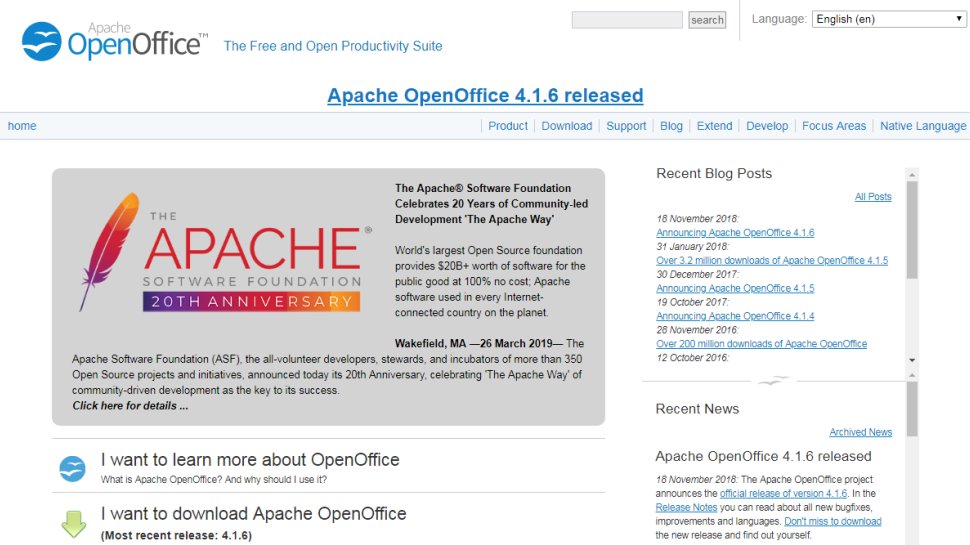
Apache OpenOffice (AOO) is an open source office suite that is available across all platforms. With over 20 years of development behind it, the suite is a consistent all-round performer.
Like LibreOffice, OpenOffice uses the Open Document format (ODF). It can view and edit a large number of other file types, particularly MS Office files. OpenOffice cannot save or edit documents using the open XML format e.g. DOCX. You can however open these files and save them as a different format.
As it is an open source suite anyone who has the know-how can suggest improvements or fix any bugs. As with other open source applications it has a great online community who are always willing to lend a hand to other users.
While the formula tool, Math, has the basic features needed to calculate equations, it is not for advanced users. OpenOffice has the option to create basic presentations through Impress, but there are very few design templates compared to PowerPoint.

Other Microsoft Office alternatives to consider
While most people are used to paying for their office software, as above there are also a number of free alternatives to Microsoft Office. Below we’ll continue this list with some more free office software applications for word processing, spreadsheets, and presentations.
G Suite aka Google Docs, Sheets and Slides is a free office software platform from Google. While the G Suite of office software applications don’t yet have the reputation for user features that Microsoft Office enjoys, Google do throw in some nice additional ones. For example, Google Docs in G Suite allows for group collaboration on documents, a feature that normally comes with a premium price from Microsoft. Additionally, the G Suite apps save everything to the cloud using G Drive, so your documents can be easily synced between any device. Perhaps even better, as G Suite runs as a web application rather than downloaded software, it means it’s accessible for any device giving it a cross-platform advantage. There are professional and business upgrade options from the basic platform, available from $5 per month for the Professional edition, and for business users it is priced at $10.
Microsoft Teams is a free office suite from Microsoft, which offers basic versions of Word, Excel, Powerpoint, and OneNote from the Office 365 suite. Everything is run online from Microsoft’s cloud, Sky Drive, with up to 2GB of storage per user. Surprisingly, there are also collaborative options available, so don’t think you need the premium Office 365 suite for business use. Unsurprisingly, though, Microsoft is keen to push on Office 365 as an upgrade, available at $5 per user per month for the Business Essentials package, and $12.50 for the Business Premium package and features.
Zoho Office is another office suite worth considering as an alternative to Microsoft Office. Although it gets less press, Zoho Office is a pretty competent software suite, and includes word processing as Zoho Writer, spreadsheets as Zoho Sheets, and presentations through Zoho Show. All of the applications are run online through the cloud, and there are also collaborative options. Pricing is free for individuals and small team of up to 25 people, though there are business Standard and Premium upgrades available starting from less than $5 per user per month.
You may interested: Best 3D printers of 2019

